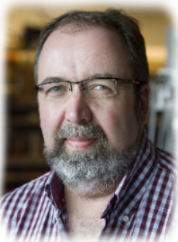History - Laboratory for Astrophysics - Leiden Observatory
Main menu:
- Harold Linnartz
- Scientific Record
- Laboratory for Astrophysics
- Ice Database
- Teaching
History
Laboratory for Astrophysics
The Laboratory for Astrophysics at Leiden Observatory was the first of its kind in the world. In 1975 the Laboratory was founded by Mayo Greenberg. He demonstrated the importance of accurate laboratory data to guide and interpret astronomical observations. Prof. Greenberg has been in charge of the laboratory for nearly a quarter century and was involved in the ongoing research until far after his retirement. Many well known scientists have been working under his supervision; Profs. d'Hendecourt, Ehrenfreund, Tielens, and Allamandola, to mention a few. Today, the Laboratory for Astrophysics is still a unique facility where astronomers, physicists and chemists meet and work together to simulate and understand inter- and circumstellar processes. Fingerprint spectra of molecular species of astrophysical interest are recorded, both in the gas phase and in the solid state, and solid state reaction pathways, both of rather small and complex molecules are studied using state-of-the-art experimental setups.




1975-1992 (2000)
1992-2004
2004-2005
2005-today
Mayo Greenberg has been in charge of the laboratory up to his retirement in 1992 after which Ewine van Dishoeck has been formally leading the laboratory until 2004. In this period much of the daily work was taken care of by Willem Schutte and Pascale Ehrenfreund. Stephan Schlemmer (now Cologne) has been heading the group for a short period after 2004. Since 2005 Harold Linnartz is in charge of the Laboratory and under his supervision it has been further expanding. With eight specialized setups, research is nowadays performed with a focus on transient species of astrophysical interest as well as the spectroscopy of interstellar ices and fundamental properties of atom and photon induced processes in interstellar ice analogues. More recently also the photodynamics of PAHs are studied. The laboratory has moved into the center of a number of large astrochemistry networks, specifically within NOVA, the Netherlands Research School for Astronomy, LASSIE and EUROPAH, two large European FP7/H2020 projects, DAN, the Dutch Astrochemistry Network, and PEPSci, a network to study Planetary and ExoPlanetary Science. Most recently the LfA became part of INTERCAT. In 2009 Prof. Linnartz was awarded a 1.5 MEuro VICI grant to further 'Unlock the Chemistry of the Heavens'. Many of the PhD students who finished their thesis over the last 15 years or postdocs who worked in the Laboratorium for Astrophysics are still active in academia, working as assistant, associate or full professors.
Since its start in 1975, more than 35 PhD theses were completed. With roughly 600 scientific publications since its start the laboratory has substantially contributed to the understanding of the physics and chemistry of inter- and circumstellar processes. Currently it is one of the largest laboratories in astrophysics embedded in an academic observatory. The LfA host the Leiden Ice Database for Astrochemistry, LIDA.